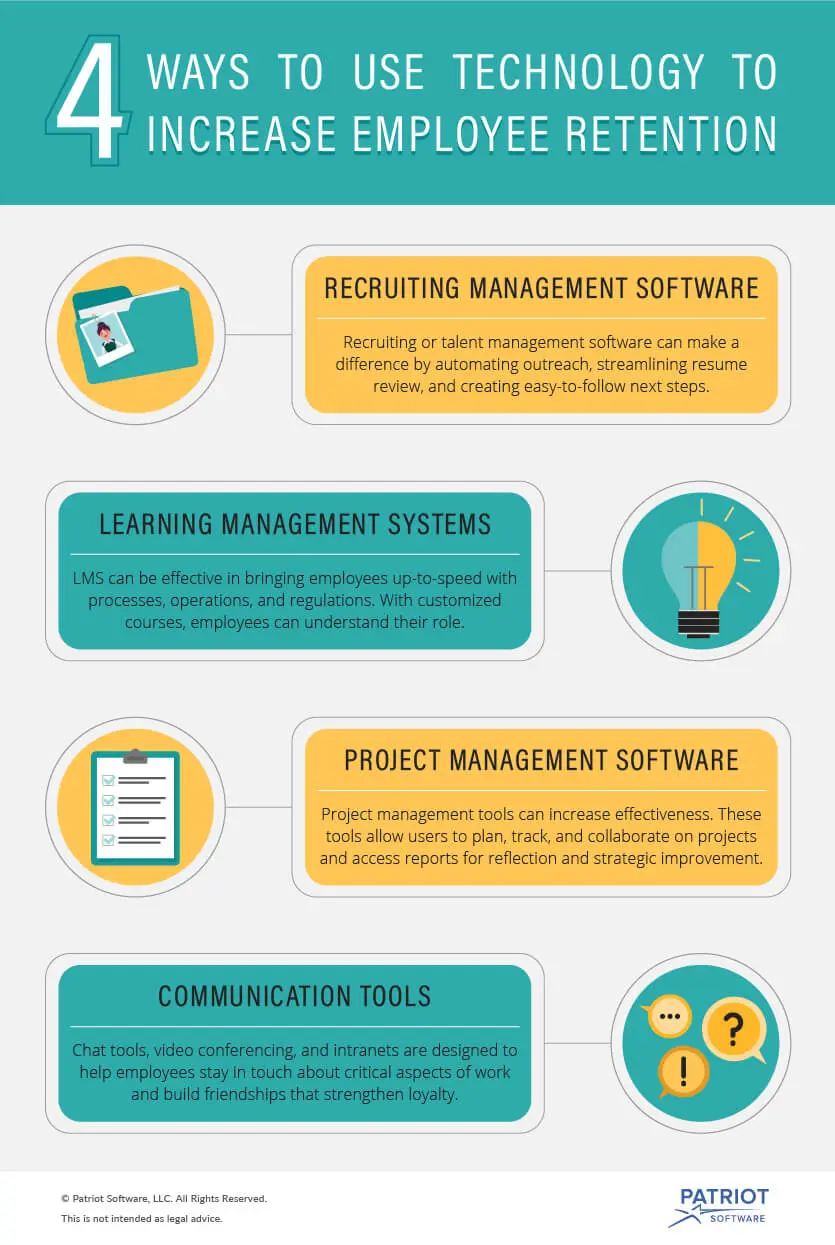Studies and reports are definitive — engaged employees perform better than disengaged employees. Companies with highly engaged employees see 2.5 times as much revenue and 22% more productivity than companies with disengaged employees. Engaged employees also have a longer employment lifecycle than disengaged employees. This means that an engaged employee in a company is more likely to stay for a longer period of time than a disengaged employee.
So, why is this important?
Replacing employees is a lot more expensive than some people might expect. It’s much more cost-effective to keep your top performers and build on that leadership flow from long-time employees. When you replace an employee, you have to take into account all of the various expenses that come with a new face — documentation, onboarding processes, negotiations, etc. All of this can add up.
If your workplace sometimes feels like a revolving door, take a look at integrating new technologies to keep current employees more engaged. Check out how these four technology solutions can positively impact your employees, better engage them, and ultimately, increase retention.

1. Recruiting or talent management software helps you hire the right fit right away
Hiring is one of the most important functions any manager can perform. It’s crucial not just to get someone who is a fit with your desired skills and experience, but someone who is a culture fit as well. It’s a two-way street — the candidate needs to be just as satisfied with the job as you are with their work. Otherwise, they’ll start looking for a new position shortly after walking in the door.
But with already busy to-do lists, hiring new employees can easily become a back-burner item for some managers. Recruiting or talent management software can make a difference by automating outreach, streamlining resume review, and creating easy-to-follow next steps. Furthermore, this software stores data about all past candidates. By evaluating the journey of those who turned out to be your top-performing employees, you can find the best recruitment sources (job boards, referrals, etc.) for your business and lean into them.
Hiring the right fit doesn’t just mean you’ll retain that person for longer — it also makes your existing employees more satisfied. With the average job opening taking more than 22 days to fill, you’ll have team members filling in on responsibilities every day the role is open. The faster and better you hire, the faster you can take that extra work off their plates.
2. Learning management systems keep growth going
Learning management systems (LMS) provide a platform for users to create, disseminate, and track trainings and other courses. On the corporate-side, an LMS can be effective in bringing employees up-to-speed with processes, operations, and regulations. Through the use of LMS, a company can customize learning experiences during onboarding (one of the most critical touch points of an employee experience) so that employees can fully understand what a company is all about and how their role fits in.
You can also create a library of stretch trainings so that during post-onboarding, employees can define their own paths forward in your company. Set goals and appropriate trainings to reach them. Having the opportunity to learn and grow is one of the most critical aspects of employee engagement.
3. Project management software makes for clearer expectations
Project management tools can increase the effectiveness and efficiency of your employees while they work towards the company’s goals and objectives. These tools allow users to plan, track, and collaborate with others throughout the lifecycle of a project, and access reports for reflection and strategic improvement.
A big cause for employee disengagement is a lack of direction and organization. Employees want to know what’s expected of them and have the opportunity to do their best work every day — it even has an effect on physical well being. Yet only half of employees surveyed by Gallup report understanding their role expectations. With project management tools, you can ensure that your entire team has their goals clearly defined and can see how their individual work fits into the bigger picture.
4. Communications tools help employees stay connected
Work is becoming increasingly remote — nearly half of Americans worked remotely at least some of the time in 2016. This shift in where we work is allowing more flexibility and work-life balance than ever before, but it’s also changing how we work in some fundamental ways.
When you’re not in the office with someone, it can be a challenge to keep the lines of communication open. With many in-person jobs also being computer-based, even employees sitting a few feet from one another may spend less time talking to each other and more time looking at their screens.
There are a variety of communications tools designed to help. Chat tools mimic the way we interact with friends and family via text, making it easy to ask quick questions and even have fun by sending emojis and GIFs. Video conferencing tools can make face-to-face time possible across countries or continents. And intranets operate in a similar style to social media, in a private setting. Using these tools, employees can stay in touch about critical aspects of work and build friendships that will help keep them loyal to one another.
Your employees are your most valuable asset. Don’t let them go. Hire smart, train well, provide opportunities for growth and connection, and ensure expectations are clear. The more top performers you retain, the more progress you’ll see.
These views are made solely by the author.



